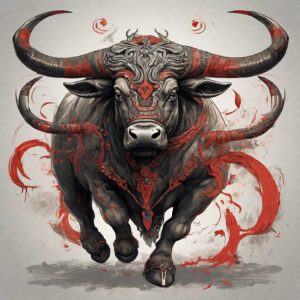
Updated Nov, 2023
China’s Corruption Crackdown: A Prelude to Reform
In the vast tapestry of China’s socio-political landscape, an extraordinary transformation is underway—a seismic shift in the form of China’s corruption crackdown. As the dragon of change awakens from its bureaucratic slumber, the government stands resolute in its commitment to unravel the deep-seated threads of corruption woven into the nation’s history.
The latest data, a snapshot of 2023, reveals that President Xi Jinping’s anti-corruption campaign has evolved into a force of unprecedented magnitude. The shockwaves reverberate through the corridors of power, disrupting established norms and challenging the very foundations of a system plagued by historical malpractices. This crackdown transcends the mere identification and elimination of individual wrongdoings; it is a strategic recalibration, a deliberate effort to redefine China’s ethical and moral compass.
In this era of sweeping change, the government’s determination echoes across the nation. The crackdown is not confined to high-profile figures but extends its reach to every echelon of society, dismantling the intricacies of corruption that have long permeated various sectors. It’s a symphony of reform playing out on the grand stage, with each note representing a step towards a more transparent and accountable future.
The tendrils of corruption, once deeply embedded, are being systematically uprooted. Government agencies, businesses, and even educational institutions are subject to scrutiny. This all-encompassing approach underscores the gravity of China’s commitment to reform. The dynamics of power are shifting, as the crackdown becomes a catalyst for a broader societal transformation.
Yet, as the nation undergoes this metamorphosis, questions arise about the methods employed in this crackdown. The government’s use of sweeping powers to enforce compliance and accountability has sparked debates about the balance between justice and potential abuses of power. Critics argue that such measures, while effective, raise concerns about individual rights and due process.
However, proponents of the crackdown contend that bold actions are necessary to break free from the shackles of deeply ingrained corruption. They see the campaign not just as a reaction to past wrongs but as a proactive strategy to fortify the nation against future ethical lapses.
In the midst of this ongoing saga, China stands at the precipice of reform. The dragon, awakened and unchained, navigates uncharted territories, forging a new path for the nation. As the anti-corruption campaign unfolds, it serves as a powerful prelude to a symphony of reform that resonates far beyond the borders of the Middle Kingdom.
The Roots of Corruption: Unveiling the Hidden Layers
o embark on a journey through the labyrinth of China’s corruption crackdown, one must delve into the intricate layers that have woven themselves into the very fabric of the system. The roots of corruption, extending their tendrils through the years, intertwine with economic disparities, bureaucratic intricacies, and cultural nuances, creating a fertile ground for illicit practices to flourish.
In this complex ecosystem, economic imbalances act as a catalyst for corruption. The vast chasm between the affluent and the disenfranchised creates an environment where those in power can exploit their positions for personal gain. As China undergoes rapid economic growth, the allure of financial gain often blinds individuals to the ethical consequences of their actions.
Bureaucratic complexities further amplify the challenges in eradicating corruption. The intricate web of government structures provides ample opportunities for individuals to exploit regulatory loopholes and engage in corrupt practices. The corruption crackdown seeks not only to punish wrongdoers but also to streamline bureaucratic processes, closing the gaps that have allowed corruption to fester.
Cultural nuances add another layer to this complex tapestry. Long-standing traditions and practices, while integral to China’s rich heritage, sometimes become breeding grounds for corruption. Gift-giving, a common cultural practice, can blur the lines between genuine gestures and corrupt exchanges. Understanding and navigating these cultural intricacies are essential aspects of the comprehensive crackdown underway.
The latest statistics paint a stark picture of the pervasive nature of corruption in China. According to the 2022 Corruption Perceptions Index by Transparency International, China ranked 78 out of 180 countries. These figures not only highlight the extent of corruption’s grip on the nation but also underscore the urgency for a comprehensive crackdown. The campaign is not merely a response to statistical rankings; it is a strategic effort to reshape the cultural and economic landscape, fostering an environment where trust can be rebuilt.
As the crackdown progresses, it aims not only to address the symptoms but to strike at the roots of corruption. Economic reforms, bureaucratic restructuring, and cultural awareness campaigns form a multi-faceted approach to create lasting change. In unraveling the hidden layers, China confronts not only the visible manifestations of corruption but also the deep-seated factors that have allowed it to persist.
The Great Purge: Navigating the Fallout of China’s Corruption Crackdown
In the dynamic aftermath of President Xi’s unwavering vision, the Great Purge unfolds – a term resonating with the aggressive tactics deployed to cleanse both the political and business landscapes. This isn’t a mere housecleaning; it’s a sweeping transformation, redefining the power dynamics that have long held sway.
As of the latest reports in 2023, the campaign has morphed into a formidable force, casting its net over high-profile officials who were once deemed untouchable. The corridors of power, once insulated from accountability, now echo with the footsteps of those entangled in the web of consequences.
The Great Purge, with its relentless pursuit of justice, extends its reach beyond national boundaries, impacting officials at both the national and regional levels. The scope of the crackdown is vast, reflecting the commitment to root out corruption at every level of governance. No echelon of authority remains immune, challenging the deeply ingrained notion that certain individuals are beyond reproach.
Disciplinary actions unfold as a central theme in this narrative of accountability. The campaign’s impact reverberates through disciplinary measures levied against officials who have abused their power for personal gain. The symbolism is powerful, sending a clear message that the era of impunity is over. The crackdown’s intensity is not just a punitive measure; it’s a strategic move to rebuild public trust and demonstrate that the rule of law applies universally.
Yet, amid the turbulence of the Great Purge, questions emerge about the collateral effects on governance and stability. The removal of key figures, while essential for cleansing, raises concerns about potential power vacuums and the ensuing challenges in maintaining governance continuity. As pillars of the establishment crumble, the nation must navigate the delicate balance between accountability and ensuring the smooth functioning of essential institutions.
The Great Purge stands as a defining chapter in China’s quest for transparency and accountability. It’s a reckoning that challenges traditional power structures, presenting an opportunity for a new generation of leaders to emerge. The evolving narrative of the Great Purge is not just about retribution; it’s about reshaping the landscape, fostering a culture where integrity, rather than influence, determines one’s trajectory.
In the unfolding saga of China’s corruption crackdown, the Great Purge represents a pivotal moment, a turning point where the shadows of corruption are dispelled, making way for a renewed era of governance and responsibility. The echoes of accountability, once faint, now resonate through the halls of power, guiding the nation towards a future defined by transparency and ethical governance.
The Butterfly Effect: Economic Ramifications of China’s Corruption Crackdown
In a departure from conventional wisdom, the economic landscape shaped by China’s corruption crackdown presents a nuanced narrative. Far from being solely punitive, the cleansing of corruption unfolds as a catalyst for positive economic transformation. As the butterfly effect takes flight, the ripples extend far beyond the immediate disruption, heralding a more transparent and efficient business environment.
Recent studies, serving as heralds of change, illuminate a path where lower corruption levels correlate with increased foreign direct investment (FDI) and heightened economic growth. This correlation serves as a beacon for nations seeking to break free from the shackles of corruption, positioning themselves as attractive hubs for global investment and economic prosperity.
China, in its quest for renewal, recognizes that weeding out corruption is not merely a punitive measure but a strategic endeavor to shape an ecosystem conducive to sustainable development. As the tendrils of corruption are pruned, the fertile soil that remains becomes a breeding ground for innovation and economic stability.
The impact of the crackdown extends beyond national borders, sending signals to the global business community. Foreign investors, observing China’s commitment to eradicating corruption, may view the nation with renewed confidence. The allure of a transparent and accountable business environment becomes a magnetic force, attracting investments that contribute to the nation’s economic revitalization.
In this economic metamorphosis, the removal of corrupt practices creates space for ethical business conduct to flourish. Companies, unburdened by the weight of systemic corruption, can redirect resources towards genuine innovation and sustainable growth. The redefined business landscape fosters an environment where competition is based on merit and efficiency, rather than illicit influence.
As China navigates the economic ramifications of its corruption crackdown, it pioneers a new narrative—one where the butterfly effect transforms disruption into an opportunity for growth. The evolving economic landscape becomes a testament to the resilience of a nation committed to dismantling the barriers that hindered its full potential. The butterfly wings of change flutter, and in their wake, a reborn economic ecosystem emerges, vibrant, transparent, and ready to embrace the possibilities of a post-corruption era.
The Psychology of Change: Resistance and Resilience in the Face of Reformation
In the intricate tapestry of China’s corruption crackdown, the psychological dimensions of change emerge as a crucial thread. Monumental shifts, such as those witnessed in this ambitious reformative endeavor, inevitably encounter resistance. The psychology of individuals and institutions deeply entrenched in the old ways becomes a formidable barrier, a battleground where the forces of tradition clash with the winds of reformation.
As the nation grapples with this psychological tug of war, a contrarian perspective beckons us to explore the resilience that often surfaces in the face of adversity. The very nature of the crackdown challenges ingrained perceptions, triggering a psychological metamorphosis that reverberates through the collective consciousness of a society in flux.
Amidst the tumult of China’s corruption crackdown, compelling stories unfurl – narratives of individuals who, once cogs in the corrupt machinery, now stand as champions of transparency. This psychological shift, a paradigm departure from the conventional narrative, serves as a testament to the malleability of the human psyche. Even in the most resistant corners of the established order, the seeds of reform find fertile ground, sprouting shoots of change that pierce through the concrete walls of resistance.
The psychological dimensions of the crackdown extend beyond individuals to encompass the institutional psyche. Bureaucracies and power structures, often resistant to external influences, undergo a collective reckoning. The age-old resistance to change is challenged as these entities grapple with the imperative of transparency and accountability.
In exploring the psychological tapestry of change, we encounter a spectrum of responses. Some cling fiercely to the status quo, resisting the inevitable tide of reform. Others, however, embrace the winds of change, recognizing the potential for a redefined identity built on principles of integrity and openness.
In the narrative of China’s corruption crackdown, psychology becomes the silent protagonist, shaping the trajectory of reform. The stories of transformation, whether individual or institutional, weave a narrative of adaptability and resilience. As the psychological tapestry unravels, it reveals not only the struggles but also the triumphs, painting a vivid portrait of a society navigating the tumultuous waters of reformation.
Global Implications: China’s Corruption Crackdown on the World Stage
As China unfurls the tapestry of radical transformation, the world becomes an attentive spectator, witnessing a nation in the throes of a corruption crackdown that extends far beyond its own borders. The implications of this seismic shift resonate globally, casting shadows and illuminating new pathways for nations navigating the complex terrain of corruption and ethical governance.
For foreign businesses operating in China, this crackdown heralds a paradigm shift. Navigating the intricate landscape of international commerce takes on new dimensions, as ethical considerations assume a prominent role. The era of operating in a business environment where opaque dealings were tolerated comes to an end. In adapting to this redefined landscape, foreign enterprises are compelled to reassess their strategies, embracing transparency and ethical conduct as prerequisites for success.
In a contrarian twist that adds complexity to the narrative, some experts posit that China’s corruption crackdown might serve as a catalyst for global change. The transformative power of this endeavor, showcased on the international stage, becomes a source of inspiration. Questions echo through the global community, resonating with the possibility that China’s actions could set a precedent for other nations.
As the world witnesses the unfolding drama, the question arises: can the resolute stance against corruption emanating from the heart of China serve as a beacon for a broader global movement? The global community becomes a stage where the impact of China’s crackdown is not just observed but analyzed for its potential ripple effect on the fight against corruption worldwide.
This isn’t merely a regional phenomenon; it’s a narrative that transcends borders and ideologies. The global implications of China’s corruption crackdown invite reflection on the interconnectedness of nations in the face of a shared challenge. It prompts nations to consider the role they play in fostering an environment where corruption is not just punished but actively discouraged.
In this evolving tale, China’s actions become a cornerstone, challenging the status quo of how nations grapple with corruption. The implications stretch beyond policy changes and legal frameworks; they touch upon the very essence of global collaboration. As China takes centre stage in the fight against corruption, the world watches not just as a spectator but as a participant in a collective effort to reshape the narrative of ethical governance on a global scale.
The Uncharted Future: Speculations Amidst China’s Corruption Crackdown
As we sail through the turbulent waters of China’s corruption crackdown, the future unfolds as an enigmatic landscape shrouded in uncertainty. Speculations proliferate, creating a tapestry of conjectures regarding the long-term repercussions of this audacious endeavor. Is the nation on the brink of a renaissance in moral and ethical values, or are we merely witnessing the calm before an impending storm of challenges?
In a contrarian spirit that injects dynamism into the discourse, some analysts venture beyond the immediate horizon. They posit that the real challenge lies not solely in the crackdown itself but in the sustainability of reforms that unfurl in its wake. This contrarian perspective invites us to delve into the possibility that China’s corruption crackdown serves as more than a localized purging; it could be the catalytic force propelling the nation into a new era, one that reverberates far beyond its borders and onto the global stage.
The uncertain future becomes a canvas upon which different scenarios are painted. Will the crackdown merely serve as a temporary deterrent, a short-lived period of correction before a return to old habits? Or is China poised on the precipice of a transformational journey, a recalibration of its very essence, fostering a culture where ethical conduct becomes ingrained in the national psyche?
The contrarian viewpoint emphasizes the need for sustained reforms, pointing to the importance of not just eradicating corruption but instigating enduring changes in the systems that allowed it to flourish. It challenges us to look beyond the immediate impact and ponder whether China’s actions will echo through generations, shaping a narrative of resilience, adaptability, and an unwavering commitment to ethical governance.
As we navigate the uncharted future, the uncertainty becomes a source of anticipation rather than anxiety. The evolving saga of China’s corruption crackdown takes on a global dimension, transcending the boundaries of speculation to become a conversation about the potential reshaping of global norms. The storm, rather than a harbinger of destruction, becomes an opportunity for renewal, prompting nations worldwide to ponder their own journeys toward transparency, accountability, and a future where the echoes of change resound across the global stage.
We expect these probes will widen, and more high-ranking officials will be arrested and forced to step down. In the short term, this will exacerbate an already volatile market, but such policies set up the foundation for a robust and secure economy. In the long run, we expect Chinese markets to soar to highs that one can only dream of today. Subscribe to our Free Newsletter, and we will let you know when the time is ripe to jump into the Chinese markets.
Conclusion
In the grand symphony of change, China’s corruption crackdown plays a pivotal note. The contrarian approach, infused with the psychology of mass transformation, invites us to question conventional narratives and embrace the excitement of an evolving landscape.
As we witness the tides of change sweeping across China, one cannot help but marvel at the elegance with which a nation can reinvent itself. The latest data and unfolding events paint a picture of a China determined to break free from the shackles of corruption, paving the way for a brighter, more transparent future.
As we look to the horizon, the allure of the unknown beckons. What lies beyond the storm of China’s corruption crackdown? Only time will unveil the secrets hidden within the folds of change, leaving us eager for more revelations in the chapters yet to be written.
Bridging Science and Society: Cross-Disciplinary Reads

How To Get Financial Freedom: Escape the Herd for Lasting Success

Legalized Food Poisoning: America’s Toxic Diet by Design

“””Investing for dummies”””: Follow The Trend
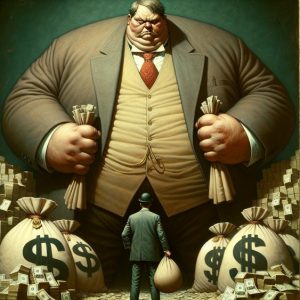
Executive Compensation Driving Share Buybacks
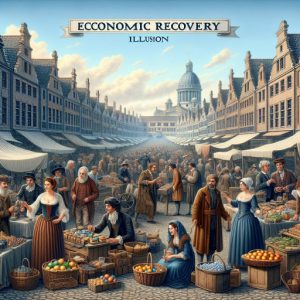
Illusions of Economic Recovery: Negative Interest Rate Controversy
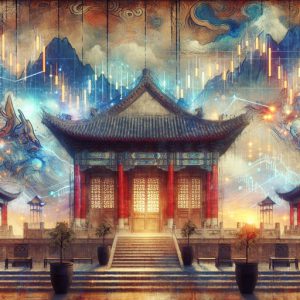
Mastering the Trading Range: Unlocking the Potential for Explosive Gains

The Golden Symphony: Unveiling the Dynamics of the Gold to Silver Ratio

Inside the Market Psychology Cycle: Unveiling Trends and Tactics

South China Sea Showdown: Intensifying Heat on the Horizon

Will the Stock Market Crash: Analyzing Possibilities and Implications

China Quantitative Easing: Battling Economic Slowdown
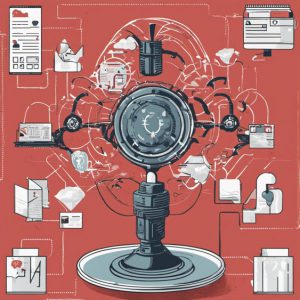
What is Data Manipulation: The Dark Side?

Corruption in China: Government’s Aggressive Crackdown on Wrongdoings

These Are The Things That Scare Americans The Most
